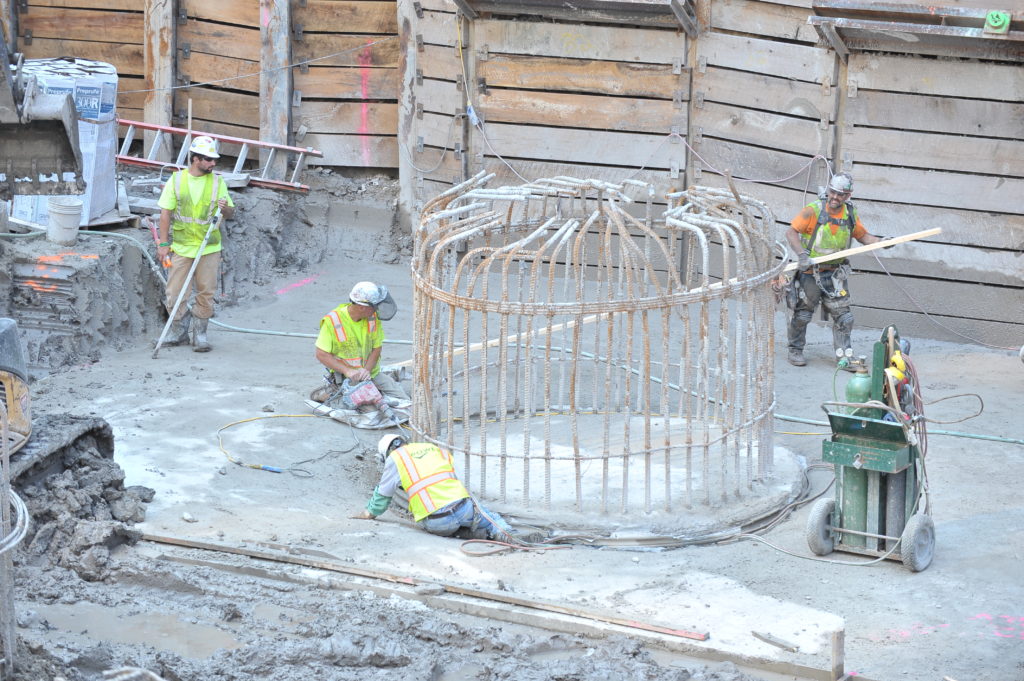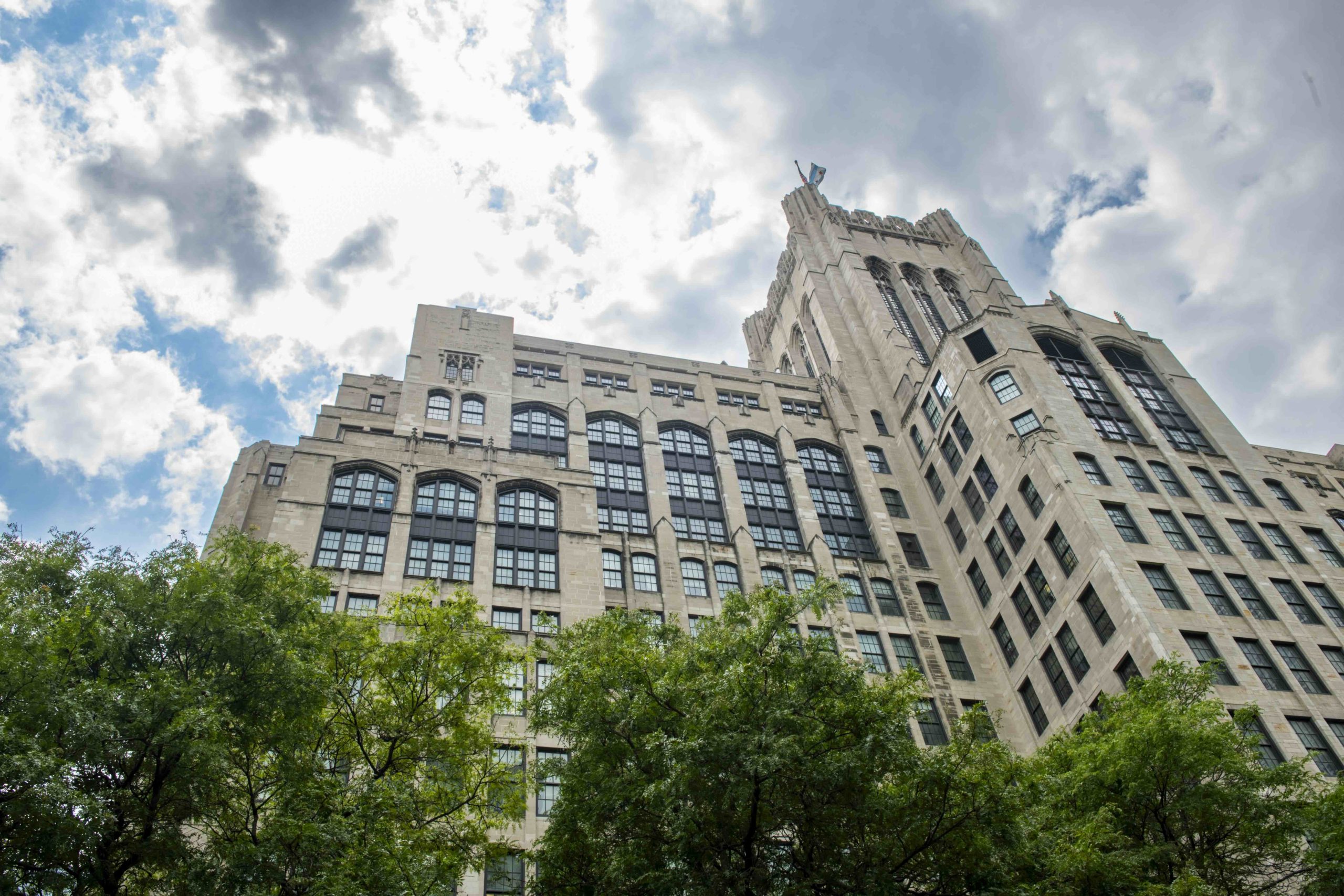View more photos of the Simpson Querrey Biomedical Research Building construction progress here.
In May 2015, Northwestern University broke ground on its largest single construction project to date, the Louis A. Simpson and Kimberly K. Querrey Biomedical Research Center. A little over a year into the construction progress, and the building is beginning to take shape.
Up until a few months ago, much of the work at the site hasn’t been visible to the typical passersby. This is because to-date, much of the progress has been extensive underground work on the foundation of the building.

“The foundation system is very extensive to accommodate the scientific equipment being installed in the building. Things like cell injections require a very precise base and all the microscopes need a vibration-free environment, so having a very stable base is very important,” Jay Baehr, senior project manager at Northwestern University said.
Creating this extensive foundation system has been no easy task. Crews have spent the last year, excavating between 40 and 60 feet down into the site to clear any existing foundation from the previous structure and drilling large support beams called caissons into the earth to anchor the building to the ground.
“Many times we hear about other high-rises moving in the wind, but because this is a research building, we needed to prevent this. To do so, we put in some of the largest caissons ever poured in the city of Chicago, they have a 10-foot diameter shaft with a 25-foot diameter bell that will house the structural steel as construction progresses,” Baehr said.
An added challenge to the process has been the first stages of connecting the Robert H. Lurie Medical Research Building with the new Simpson Querrey Biomedical Research Center. In order to do so, crews had to excavate 60 feet down into the construction site to align the two foundations.
“This is a unique project because of the scale and size, but what makes it really interesting is building it as an addition to the Lurie building. We’re taking structure that was built in 2001 and building on top of and alongside it. It makes for a creative approach to the construction process,” Baehr said.
The process of joining the two buildings together will support collaborations between affiliates and other schools at Northwestern with medical school scientists. In its first phase alone, the building is expected to create an additional 600,00 square feet of space and 2,000 full-time positions.
“This building represents the expansion of research for the whole university. There is very little expansion available for the sciences on the Evanston campus. By building this large building, the university is continuing to grow its research enterprise,” Baehr said.
In coming months, crews will finish installing the caisson system and begin pouring concrete for the structural system. For the remainder of the year and into next spring, concrete for the basement floors will be poured and the basement structure will be framed. The team expects to begin adding structural steel and framing work on the ground floor in winter 2017.
“This is the one of the biggest medical research buildings ever attempted. When the University finishes the second phase, it will be 600 feet tall, so it’s quite a unique challenge. It is not like your typical everyday building,” Baehr said.






